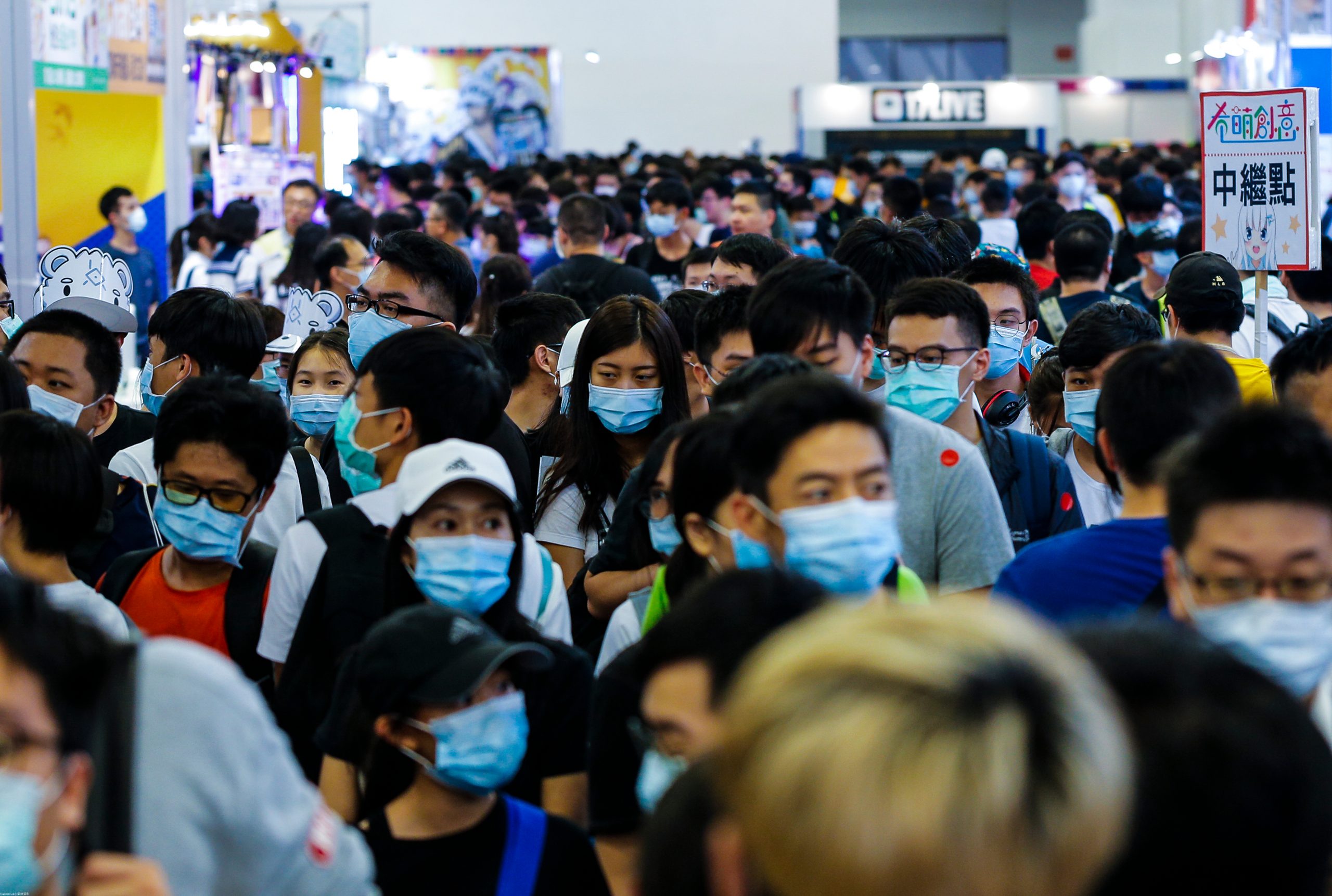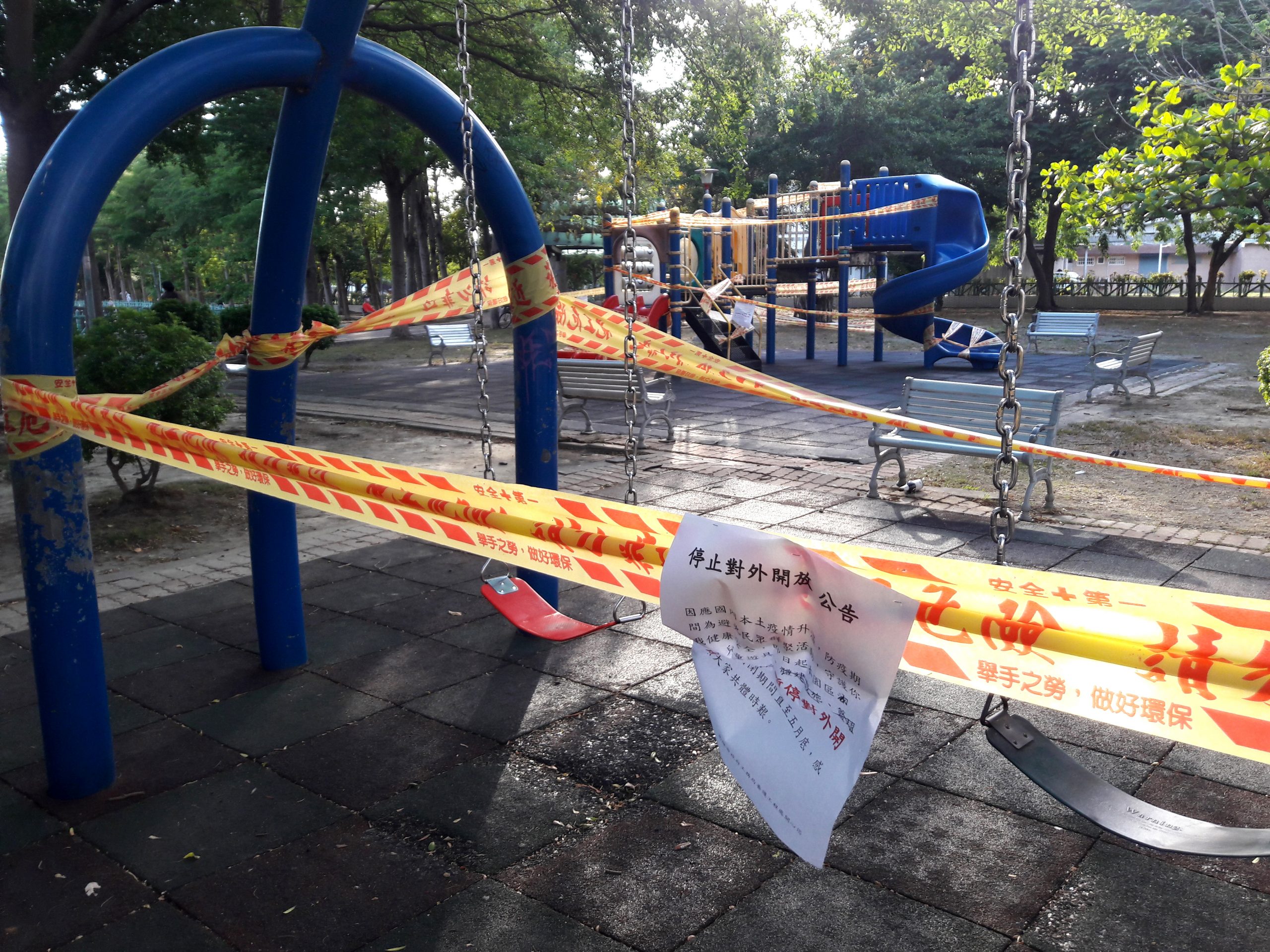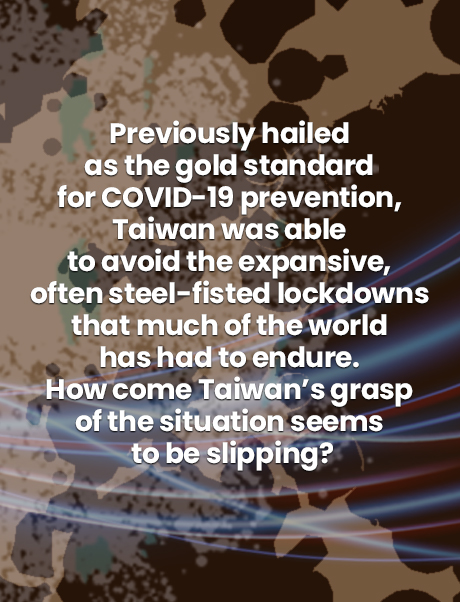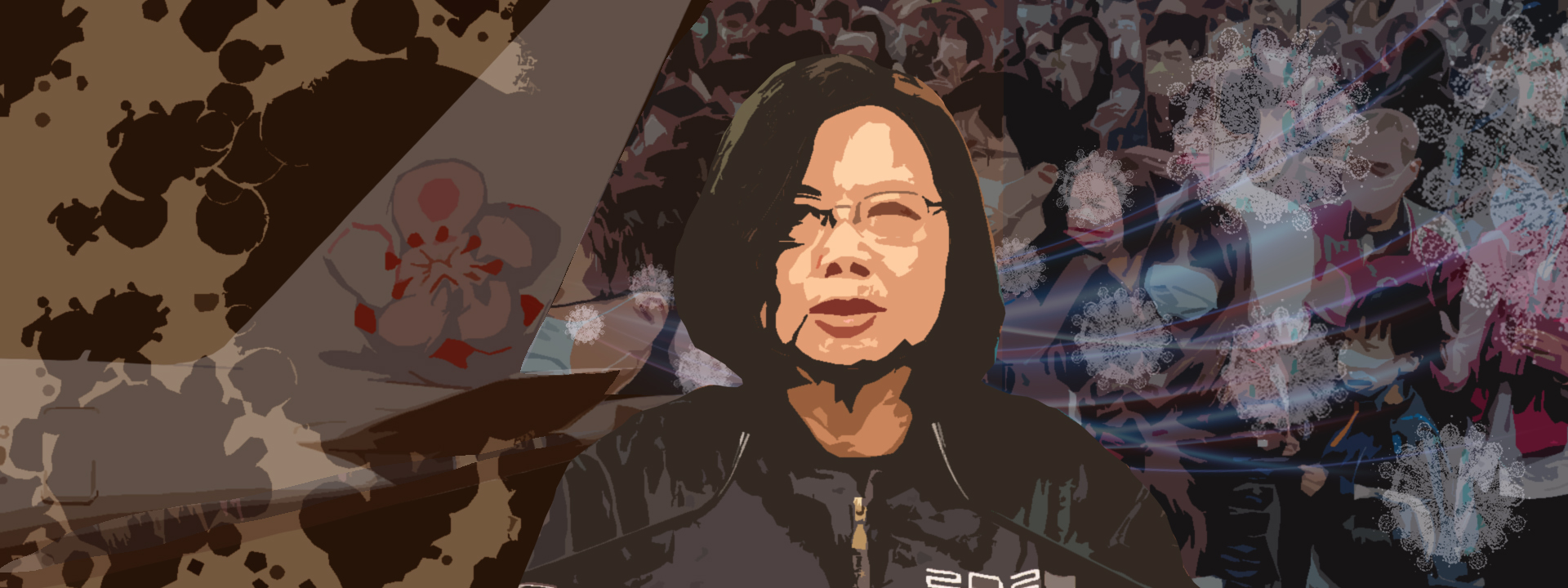Last month, Taiwan saw the end of its near-spotless COVID-19 track record.
On May 14, 2021, the country counted only 29 cases of domestic transmission. Overnight, the cases spiked sixfold. Taiwan has since routinely seen several hundred cases per day.
In response, the central government declared a “level three” alert status. At this level, businesses, restaurants, and schools remain open, but public gatherings of more than five indoors and ten outdoors are forbidden. All members of the public must wear masks outside of their homes. Businesses and establishments unable to maintain social distancing measures are advised to close.
Some have referred to level three as a form of “soft lockdown,” just falling short of a full and strict lockdown, which is equivalent to a level four alert status.
Though it lacks the sweeping and heavy-handed restrictions of a hard lockdown, the jury’s still out on level three. As of June 7 and 8, case counts had declined from a peak of close to 500 cases per day to just over 200.
Infections continue to spike sporadically, making it clear that the end is not in sight. As level three has been extended to last until June 28, experts warn that COVID-19 cases could again explosively break out if measures were relaxed.
Some have asked: Where did Taiwan go wrong? Previously hailed as the gold standard for COVID-19 prevention, Taiwan was able to avoid the expansive, often steel-fisted lockdowns that much of the world has had to endure. How come Taiwan’s grasp of the situation seems to be slipping? There is probably no single explanation.

With its early action and strong containment protocols, Taiwan quickly became the world’s shining example of how to deal with the COVID-19 pandemic. But perhaps because it was so successful at keeping the virus out, the country missed out on the crucial lessons of how to deal with it once it inevitably entered its borders.
Lessons unlearned
One of the reasons behind the current outbreak in Taiwan is the country’s increased easing of restrictions. Previously, people coming into the country were required to undergo five days of quarantine followed by nine days of self-health management. But this protocol was recently relaxed: quarantine now only lasts for three days, after which people are instructed to self-manage for 11 days. Following the outbreak of cases, quarantine periods for pilots was again changed to five days.
Indeed, many of the spikes in cases can be traced to airline workers. Before the current outbreak, clusters broke out at a quarantine hotel for pilots near Taoyuan International Airport, the Novotel Taoyuan International, and among China Airlines pilots. The new virus variants, particularly the one from the UK, have also undoubtedly contributed to the rising waves of coronavirus cases in Taiwan because they are more contagious.
Some experts have suggested that because Taiwan never truly had a need for a lockdown, the country failed to learn the lessons of enforcing such a health measure. Other countries that were also initially successful against COVID-19 – Thailand and Vietnam – are also finding that their initial victory may have now become a handicap.
During the first year of the pandemic, for example, Taiwan could attribute much of its success to a robust contract tracing mechanism. But many of the current cases, it seems, could be traced back to “tea parlors,” where sex work takes place in the working-class district of Wanhua, Taipei.
Unsurprisingly, people in these circles are reluctant to disclose their identities or their travel histories for fear of being stigmatized. In turn, what once worked wonders for Taiwan has now lost its edge.
Similarly, despite having a year to prepare, Taiwan still failed to have adequate testing or increase hospital bed capacity to prepare for a potential outbreak.
Eventually, however, by using PCR machines requisitioned from research institutions, expanding quarantine facilities, and deploying “contingency hospitals” for COVID-19 treatment, Taiwan was able to reduce test backlogs and free up bed space.
The level-three alert helped flatten the curve, and though Taiwan had to play catch-up at first, its efforts to ramp up its testing and hospital capacity have also helped the country raise the line.
Ill-prepared
The lack of testing capacity or adequate hospital facilities at the start of the outbreak may well be blamed on the government’s failure to prepare ahead of time, as more than one public health expert pointed out.
During the first year of the outbreak, since its leaders saw the pandemic as a problem that stopped at its borders rather than something that would have to be eventually dealt with, Taiwan was so successful at keeping the pandemic from entering the country. That it wasn’t until January this year when the first local case of a doctor getting COVID-19 was reported may have bred complacency on the part of Taiwan.
Despite an initial supply of 400,000 AstraZeneca vaccines, Taiwan had low rates of vaccination owing to vaccine hesitancy among the people following reports of AstraZeneca vaccine potentially leading to blood clots. And with no serious outbreak in Taiwan, it seemed there was no urgency to get the people vaccinated.
Even if Taiwan’s 400,000 vaccine doses at the start of the outbreak had been used up, this would have just covered just over 1 percent of Taiwan’s population. This means Taiwan simply did not have enough vaccines.

In response to the growing number of cases, the central government has raised Taiwan’s level three alert status, putting the country under a soft lockdown, which forbids children playing in parks. But the main political opposition, the pro-China Kuomintang party, has called into question this reluctance to impose a hard lockdown and has branded it as a sign of weakness.
Partisan pains
To further complicate matters, partisan splits in Taiwanese politics have also hamstrung its COVID-19 response. Conflicts between the central and local governments, in particular, have held the country back.
At present, Taiwan is led by the independence-leaning, center-left administration of President Tsai Ing-Wen under the Democratic Progressive Party. Opposed to it is the Kuomintang (KMT) party, a unification-leaning, center-right party, which holds power over a number of local government units, including New Taipei, one of the two major cities most affected by the current outbreak.
Taipei, where the new outbreak began, is governed by Ko Wen-je of the Taiwan People’s Party, which is closer to the KMT in its political orientation and seen as part of the “pan-Blue camp” led by the KMT.
Much of the political contention between local and central governments has revolved around the question of a full lockdown. The central government has demurred on this restriction policy in view of its anticipated adverse economic impacts. The local governments, in contrast, have sometimes pushed for lockdowns, and have censured the central government for its perceived inadequate efforts to fight COVID-19.
 The political tussle amid Taiwan’s efforts to quell the pandemic took the form of KMT-controlled local governments muddling the distinctions between alert levels. When the central government declared “level two,” for instance, local governments declared that they were moving to “quasi-level three” status. When the central government declared “level three,” local governments announced that they were shifting to “quasi-level four.”
The political tussle amid Taiwan’s efforts to quell the pandemic took the form of KMT-controlled local governments muddling the distinctions between alert levels. When the central government declared “level two,” for instance, local governments declared that they were moving to “quasi-level three” status. When the central government declared “level three,” local governments announced that they were shifting to “quasi-level four.”
The pan-Blue camp has also called for general rapid testing for COVID-19 cases and lockdowns in coronavirus hotspots. The Tsai administration has resisted these calls on the grounds that general testing would produce many false negative results that will overwhelm an already overworked healthcare system and further bloat the testing backlog. Besides, it was too late for lockdowns, it said, especially when COVID-19 has spread elsewhere in Taiwan.
With testing capacity still limited, the Tsai administration has also argued that general testing would divert resources away from where they are more urgently needed.
To quell worries, the central government has sought to reassure the public that Taiwan’s hospital system has sufficient capacity to deal with the current outbreak. This has prompted local governments to criticize the Tsai administration citing what they claim is the latter’s inaccurate grasp of the conditions on the ground, based on reports of hospital bed shortages or allegations of medical personnel reusing N95 masks.
More politicking
The vaccination issue has also proven to be fertile ground for more politicking. In response to criticisms of the vaccine shortage, the Tsai administration has alleged Chinese interference in attempts to purchase vaccines, and has said that it has placed orders for 30 million doses, enough to cover Taiwan’s 23 million population to achieve herd immunity, but that these were met with delays.
The pan-Blue camp has also wasted no time in using vaccines for political leverage. For instance, they have sought to depict the Tsai administration as having stalled on purchasing vaccines until it was too late for Taiwan. They have also suggested that Taiwan should import vaccines manufactured in China, or that if it, as the pro-China party in Taiwanese politics, were in power, there would be no interference from China.
The KMT has also attacked plans by the Tsai administration to bank on domestically manufactured vaccines to make up for Taiwan’s inability to purchase vaccines from abroad, claiming that the administration’s plans to skip phase III testing makes these vaccines unsafe for the public, and renders it unlikely to earn international recognition.
All this bickering has clogged not only Taiwan’s political machinery but also the wheel of public discourse. It now seems that there is very little space left for medical experts to weigh in with unbiased viewpoints on suitable health measures. This, while both political camps mobilize experts to vouch for their policies, whether in defense of or against lockdowns, mass testing, and domestically produced vaccines.
In this sense, Taiwan’s current outbreak and the challenges confronting the current administration may not be attributed to one specific factor but to a variety of causes, many of which point to deeply rooted structural issues that have hounded Taiwanese society long before the outbreak of COVID-19. ●
Brian Hioe is one of the founding editors of New Bloom. He is a freelance writer on social movements and politics, as well as a translator, and was Democracy and Human Rights Service Fellow at the Taiwan Foundation for Democracy from 2017 to 2018.



















